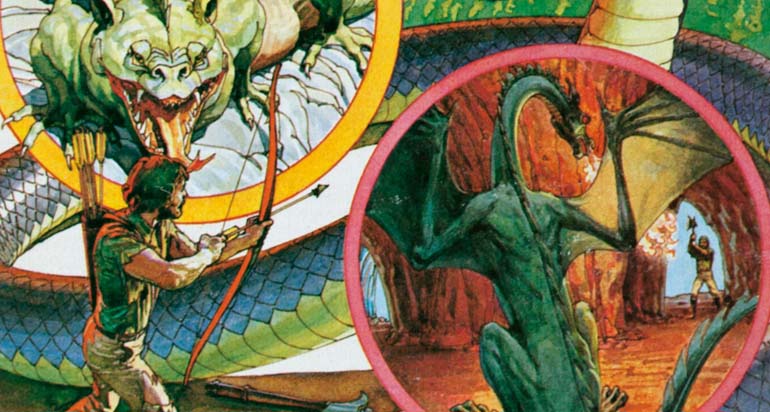While my focus is on tabletop games, it is impossible to tackle them without occasionally talking about videogames. This here is the first official Advanced Dungeons & Dragons videogame (unless you count the LCD handheld game released by Mattel in 1981, which I don’t) which, at the time of its release for the Intellivision system in 1982, had the shockingly generic name of Advanced Dungeons & Dragons. It apparently never occurred to anyone in the TSR licensing department that they might eventually make more than one videogame. Sure enough, a sequel followed the next year (more on that tomorrow) and Mattel had to change the name of this game to Advanced Dungeons & Dragons: Cloudy Mountain in order to distinguish it.

The best thing about the game? Probably the cover art, which is very much in the vein of Atari’s approach to videogame packaging. Unlike a lot of paintings used for game packaging, this one is pretty accurate. You do fight snakes, lizards and dragons. There are boats. One exception: You never use an ax. Also, those circles are my favorite early-80s design trick.
The game has very little AD&D substance to it; despite the trappings of adventurers exploring dungeons, the systems that drive the tabletop game aren’t recognizable here. Little is. Your character is a cypher. Your only available attack is to shoot arrows. Even the monsters are generic (though sometimes weird – spiders eat arrows, apparently. Who knew?).
The game is split between overland travel and dungeon exploration. The object is to find two parts of the Broken Crown, restore them and survive. The dungeons are, to my knowledge, one of the first examples of a randomly generated graphical videogame environment (Rogue, which came out in 1980, was the first to use randomly generated dungeons, but portrayed them
using ASCII characters.)
One novelty: three flashing dots represent you on the overland map – one for each life. Those dots, and your “lives,” (already a standard videogame feature in ’82), actually represent a party of three adventurers. This clever abstraction has no real bearing on the game, but it illustrates just how early videogame developers seized on associating D&D with the notion of a party of adventurers.
So there you have it, the first AD&D videogame, probably seen as a disposable, licensed cash-in for Mattel, but really part of a quiet arms race that would change the face of videogames. But more on that later in the week.



